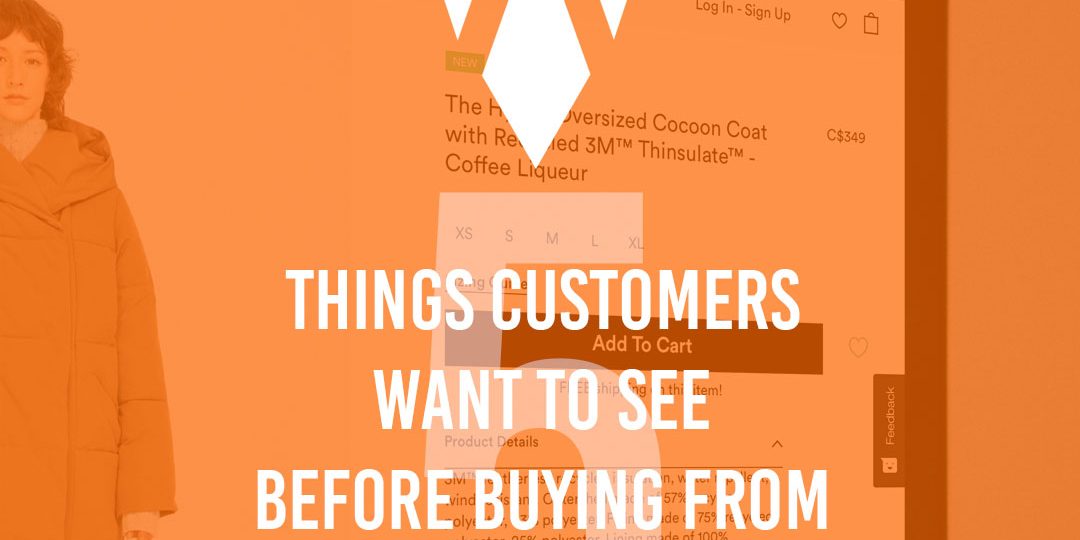5 Things Your Customers Want to See on Your Website Landing page Before Buying from You
If you are planning on creating an ecommerce website as a new business venture or to expand your retail business online, the first thing to know is that it isn’t always easy. Of course, nothing is when it comes to business! With an ecommerce site, however, you have to make sales, fill orders, make transactions, and do a lot more, all of which together make things a lot more difficult. This is exactly why it is vital you gain sufficient knowledge about what to have on your website, or more suitably, what customers want to see on your website before buying from you.
While creating a website landing page for your business is an excellent way to attract new customers and keep your existing ones engaged, your website should have some of the key elements to be well-rounded, and the lack of which can actually result in frustrated customers.
So, here is an in-depth look at the five things your customers want to see on your website before buying from you:
1. Design and Navigation
Let’s talk about a physical store scenario here: how many times have you walked into a store that’s completely unorganized and uninviting and walked out with no interest to make a purchase? On the other hand, think about a store that is organized, clean, inviting and makes you feel comfortable; you would probably become their repeat customer. This same rule applies to ecommerce websites as well.
For potential customers to believe in your company, the design of your website landing page is the first aspect you should concentrate on. While hiring good designer is the ideal way to achieve this, if you don’t have the budget as a startup, you can use the many resources online to improve your website design as much as you can.
Equally important is navigation. Unresponsive elements and crappy navigation controls around your site also frustrate potential customers. Regardless of the platform your users choose to access your website from, your website navigation should be seamless. Based on the screen size of your users’ device, your website should collapse to make it easy for them to navigate and browse.
2. Speed
The speed of a website landing page greatly influences sales for the business. If you hadn’t known already, users notice when they visit a speedy website. In fact, the difference they experience from that of a slower website would be more significant than you imagine. Users tend to get a negative impression about a company when they come across their slow website. Therefore, in addition to you being competitive in the market, it is essential that your website load time is too. For your website to be considered fast, page loading time should be no more than two seconds. After all, who has the patience to wait for several minutes for all the product pictures to load!
3. Validation
In this context, validation refers to recognitions and awards your company has received, customer testimonials or reviews, clients list, certification or license, and such. Yes, your potential customers will want to know about what your existing customers have to say about you and who you do business with. If your customers are businesses, clients list are the most important than any other validation. Another form of validation you can add on your website landing page is your presence on social media, which includes blogs and social networking sites, especially those related to your industry.
4. Product Selection
When it comes to product selection, many ecommerce website owners believe that having a vast array of products will help them gain more customers and encourage their purchase. But, the fact of the matter is that, having too many choices can actually affect your sales. Therefore, you don’t really have to have a huge selection of products in order to be successful. This is especially helpful for startups, because you cannot, obviously, afford the same.
By limiting your product selection, you can: enable customers to easily and quickly find what they came to your site for, increase conversions as the total number of clicks to checkout will be automatically limited, and also eliminate decision paralysis (the lack of ability to decide). And when you limit your product selection, it is crucial that the selection that you do provide is well thought out and properly strategized.
5. Security
By operating an ecommerce website, you will be handling sensitive customer information like credit card details, social security numbers, contact details, and more. Therefore, it is a given that customers would expect all their details to be private and secure when shared on your website, especially with the current age of increasing cybercrime. You can protect your customers’ data by encrypting the same using the highest standard of encryption currently available, which is known to Secure Socket Layer (SSL) encryption. This is a step that customers will hugely appreciate from an ecommerce website.








